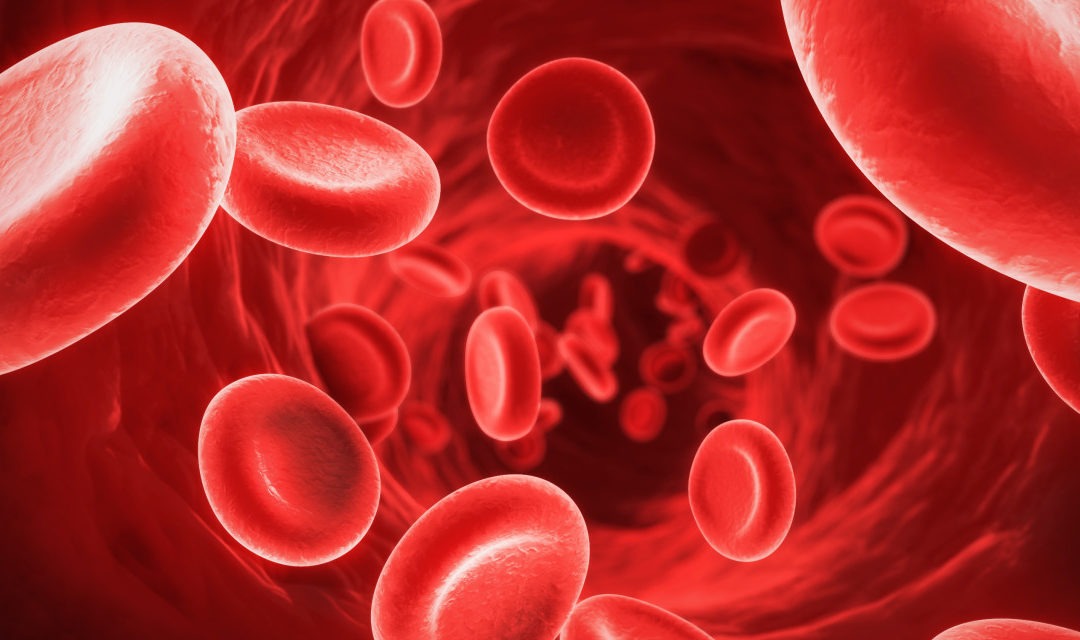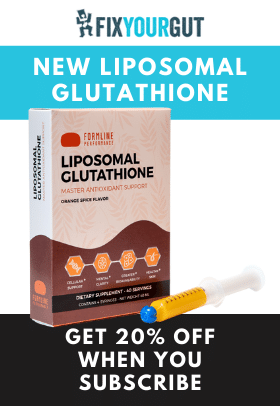Proper iron metabolism is essential for mitochondrial function and your health as a whole. Iron is one of the most abundant minerals in our human body, most of it is bounded to iron regulating proteins (ferritin, hepcidin, ceruloplasmin, hemosiderin, and transferrin) or heme to protect our cells from the oxidative stress and damage caused by free iron. Free iron also can catalyze the conversion of hydrogen peroxide produced by our cells into free radicals which can further damage cells. Little free iron exists in our body, and too much can be harmful and ranges from creating inflammation in our cells to feeding gut overgrowth from improper iron supplementation. Improper iron metabolism burns through stored magnesium used to combat elevated iron caused oxidative stress, leading to hypomagnesia. Iron is essential for our survival, but it can also poison us if it is poorly metabolized.1 2 3 4
Iron is important to our health and mitochondria because it:5 6 7 8
- Contributes to cellular respiration as an electron donor.
- Binds to hemoglobin in our in our erythrocytes (red blood cells) and myoglobin (released from our muscle cells into the bloodstream) to transport oxygen throughout our vascular system.
- Iron is an essential part of many proteins including iron-sulfur clusters and heme groups which are assembled in our mitochondria.
- Iron is vital to our microbiome, many organisms also require it for cellular respiration.
General information about iron metabolism markers:9 10 11 12 13 14 15 16 17 18 19 20
- Iron serum – amount of circulating iron that is bounded to transferrin. Reference ranges: 65-176 μg/dL for males, 50-170 μg/dL for females.
- Transferrin – iron-binding blood plasma proteins that control the amount of free iron in our blood. Increased transferrin is seen in iron-based anemia, and decreased transferrin is seen in people suffering from iron overload. Reference range: 204–360 mg/dL.
- TIBC(total iron binding capacity) – a blood test that measures the capacity of our blood to bind free iron. Reference range: 250–370 μg/dL.
- Transferrin saturation – the amount of transferrin in the blood that is free to bind with iron. Optimal reference ranges: 35-50% for males, 35-45% for females.
- Ferritin – protein that stores iron and releases it when needed by our body. Optimal reference range: an optimal ferritin level is between 20-50 ng/ml, but it depends individually on the person. Acceptable ferritin levels are no higher than 80 ng/ml.
- Hemosiderin – iron-Storage complex found in our cells comprised of ferritin and other materials. Might be a more important marker than ferritin, hemosiderin is found within the cells. Optimal amounts of ferritin should be in our serum, the rest of our iron and ferritin need to be tightly regulated, within our cells and hemosiderin helps maintain iron homeostasis. The iron with hemosiderin is very poorly available, but large isolated deposits of hemosiderin within organs can create damage and inflammation. Hemosiderin is also commonly found in macrophages after bleeding, macrophages through phagocytosis, help break down excess red blood cells and hemoglobin. Hemosiderin might be an important marker to determine the severity of chronic venous disease and heart disease. Hemosiderin is tested with a urine test.
- Hepcidin – protein that is a key regulator of the entry of iron into circulation. Also, it regulates the amount of iron absorbed in our intestines. Reference ranges: 17-286 ng/ml for males, 29-254 ng/ml for females.
- Hemoglobin – iron-contain metalloprotein that is required for oxygen transport in our red blood cells. Reference ranges: 12.1 – 15.1 ug/l for females and 13.8 to 18.0 ug/l for males.
- Ceruloplasmin – copper and iron transporting protein. Reference range: around 30 mg/dl.
- Magnesium RBC (red blood cell) optimal reference range should be near 6.5 mg/dl.
Optimal ferritin (stored iron) levels are a crucial overall marker of good health. Elevated ferritin is seen in iron overload and can be caused separately by systemic inflammation, alcoholism, liver disease, renal failure, low ceruloplasmin, metabolic syndrome, ingestion of acetaminophen, frequent blood transfusions, leukemia, hyperthyroidism, and Hodgkin’s lymphoma. Low ferritin is seen in iron-based anemia and can be caused by excessive gut overgrowth, scurvy, hypothyroidism, celiac disease, veganism, and excessive internal or menstrual bleeding.21 22 23 24 25
Iron overload is also known as hemochromatosis, which can be genetical (heredity hemochromatosis), from increased ingestion of supplemental, hard water with increased iron, or dietary iron, it can be caused by liver issues, or it can be caused by repeated frequent blood transfusions. If you suffer from hemochromatosis or have the medical conditions sideroblastic anemia, pyruvate kinase deficiency, or thalassemia major, regular iron panels are needed to make sure iron and the storage proteins are not elevated causing health issues. Elevated iron in the body starts to damage the mitochondria and the cells of the liver (proper liver function is vital for the metabolism of iron and its excess elimination through bile), diabetes (iron accumulation in the islet beta pancreatic cells), cardiovascular issues (through inflammation and increased mitochondrial oxidative stress), and arthritis (from iron deposits causing inflammation in the joints). Diagnosis of iron overload is made from someone have a medical history of the above symptoms, ferritin, and iron serum panels being elevated, low hepcidin serum levels, genetical testing (mainly the HFE gene), and liver biopsies. If you are suffering from iron overload, I would talk to your doctor about limiting or ceasing any iron supplementation, make sure bile production and liver function is normal, maintain proper ferritin and ceruloplasmin levels, take the supplement Ip6 to bind excessive dietary iron (it can also bind with other minerals, so monitor your mineral levels over time with use), and schedule regular phlebotomies to rid the body of excessive iron.26 27 28 29 30 31
Bacterial overgrowth can reduce iron absorption by our body, many SIBO clients I have coached suffer from iron-based anemia. Most doctors prescribe iron to treat the anemia, but instead of you metabolizing the iron, the overgrowth takes it in for cellular respiration and increased virulence. Also, when you are dealing with bacterial overgrowth or severe inflammation, the body increases hepcidin, which is the critical regulator of the entry of iron into blood circulation to attempt to sequester iron from bacteria or make it harder for them to acquire it for respiration leading to possible anemia from chronic inflammation and disease. Blood markers for anemia caused by chronic inflammation and infection are low serum iron, low transferrin and TIBC, normal transferrin saturation, and high serum hepcidin. If hepcidin is elevated and the markers for anemia are evident, you do not want to supplement with iron to correct the anemia. Absorption of iron from the intestines would be significantly reduced, leading to increased gut overgrowth and inflammation from the excess iron moving through the digestive system, causing hepcidin to increase further, creating a vicious cycle.32 33 34 35 36
When hepcidin increases, macrophages and liver cells trap iron and gut absorption decreases to prevent too much iron from entering systemic circulation, reducing overgrowth of certain bacteria and inflammation. Hepcidin is possibly a broad spectrum antimicrobial peptide that reduces some forms of bacterial overgrowth. However, hindrance of iron metabolism by our macrophages may help protect some organisms as well. Regulation of hepcidin is crucial for iron metabolism and reduction of overgrowth. Vitamin D has been shown to regulate the production of hepcidin by the body properly. Ingesting the probiotic E. coli Nissle 1917 may help to reduce opportunistic bacterial overgrowth in the gut by competing for iron for survival. In conclusion, if you are suffering from elevated hepcidin based anemia I would recommend reducing inflammation, reducing systemic infection load, increase sunlight exposure for vitamin D if possible, and I would not recommend ingestion any iron supplements which may worsen your health concerns.37 38 39 40
Here is a description of how iron metabolism in the gut is crucial for controlling the microbiome:41
“Deletion of up to three iron receptors did not result in a growth defect in media supplemented with lipocalin 2 (data not shown), indicating that E. coli Nissle possesses redundant lipocalin 2-resistant iron uptake systems. Integrating this finding with our observation that E. coli Nissle outcompetes S. Typhimurium in vivo along with our previous finding that S. Typhimurium benefits from acquiring iron in a lipocalin 2-resistant fashion during inflammation, we hypothesized that Nissle’s multiple iron uptake systems provide a competitive advantage against S. Typhimurium when the intestine is inflamed, and, as we observed, fecal iron is significantly reduced. Consistent with our hypothesis, our results show that E. coli Nissle’s ability to displace the highly evolved pathogen from its intestinal niche is dependent on iron acquisition. Furthermore, E. coli Nissle was only able to reduce the colonization of S. Typhimurium when lipocalin 2 was expressed. Although lipocalin 2 is one of the host defenses exploited by S. Typhimurium to colonize the inflamed gut and compete with the microbiota, E. coli Nissle also subverts this host defense mechanism to thrive in the same inflamed and iron-starved environment. By scavenging for iron more effectively than S. Typhimurium both with its own armament of siderophores and with its ability to compete with S. Typhimurium for uptake of salmochelin, E. coli Nissle tips the scales back in favor of the host, effectively augmenting the host’s innate immune response by acting as a surrogate of sorts for lipocalin 2. It is along these lines that we propose that E. coli Nissle—and possibly other beneficial components of the microbiota—may provide colonization resistance in part by boosting the host’s nutritional immunity, sequestering nutrients from pathogens when the host fails to do so.”
Altogether, our results show that iron acquisition in the inflamed gut is a critical mechanism for the ability of the probiotic E. coli Nissle to limit Salmonella intestinal colonization. Furthermore, we have demonstrated that this action of E. coli Nissle results from its resistance to lipocalin 2, previously considered a mechanism of virulence but now also seen as an essential property of a protective commensal organism. As antibiotic treatment is contraindicated for uncomplicated Salmonella infections due to the prolongation of fecal shedding, the administration of E. coli Nissle may be a feasible alternative for diminishing Salmonella colonization and ameliorating symptoms. As microbial dysbiosis is apparent in a variety of intestinal disorders, the iron acquisition may also contribute to other probiotic actions attributed to E. coli Nissle. The ability of E. coli Nissle to defy all odds and out-compete a highly evolved pathogen for an essential micronutrient may be seen as a paradigm for understanding the protective actions of commensal microorganisms and a foundation upon which to build future probiotics tailored to the treatment of different diseases.”
When serum iron is low, TIBC is high, and transferrin saturation is low, iron-based anemia might be occurring. I rarely recommend the supplementation of iron, even if you are anemic. For most people the issue is not the lack of ingestion of iron (unless they are vegan), their problems range from liver disease, inflammation, gut overgrowth (ingesting iron before we can obtain it from our diet), lack of proper bile production, low serum B12 levels in the body, or issues with iron metabolism. One should treat their overgrowth, optimize liver function and bile production, increase ceruloplasmin if it is low, take an adenosylcobalamin sublingual supplement if your serum B12 is low, and consider taking lactoferrin if their iron and ferritin is severely low to tackle your anemia. You should also ingest beef liver a few times weekly to increase heme-based iron if needed.42
- Robbins, Morely, Young, Genelle. Musings from Mag Volume Two, Magnesium Advocacy Group, 2015. ↩
- Robbins, Morely, Young, Genelle. Musings from Mag Volume Three, Magnesium Advocacy Group, 2015. ↩
- http://lpi.oregonstate.edu/mic/minerals/iron ↩
- Garrison, Cheryl. The Iron Disorders Institute Guide to Anemia, Cumberland House; 2 edition, June 1, 2009 ↩
- Robbins, Morely, Young, Genelle. Musings from Mag Volume Two, Magnesium Advocacy Group, 2015. ↩
- Robbins, Morely, Young, Genelle. Musings from Mag Volume Three, Magnesium Advocacy Group, 2015. ↩
- http://lpi.oregonstate.edu/mic/minerals/iron ↩
- http://gotmag.org/iron-toxicity-post-47-the-truth-about-the-cause-of-mitochondrial-dysfunction-at-least-as-i-see-it/ ↩
- Robbins, Morely, Young, Genelle. Musings from Mag Volume Two, Magnesium Advocacy Group, 2015. ↩
- Robbins, Morely, Young, Genelle. Musings from Mag Volume Three, Magnesium Advocacy Group, 2015. ↩
- http://lpi.oregonstate.edu/mic/minerals/iron ↩
- http://gotmag.org/iron-toxicity-post-47-the-truth-about-the-cause-of-mitochondrial-dysfunction-at-least-as-i-see-it/ ↩
- Garrison, Cheryl. The Iron Disorders Institute Guide to Anemia, Cumberland House; 2 edition, June 1, 2009 ↩
- http://gotmag.org/mag-pie-alert-35-toxicity-of-iron/ ↩
- https://selfhacked.com/blog/iron-balance-blood-test-iron-deficiency-anemia-overload/ ↩
- https://selfhacked.com/blog/iron-part-3-iron-intake-supplementation-ways-increase-decrease/ ↩
- https://selfhacked.com/blog/iron-part-4-negative-health-effects-high-iron/ ↩
- https://selfhacked.com/blog/iron-deficiency-excess-diseases/ ↩
- https://www.ncbi.nlm.nih.gov/pubmed/12514590 ↩
- http://gotmag.org/iron-toxicity-post-55-ferritin-is-nothing-hemosiderin-is-everything/ ↩
- Robbins, Morely, Young, Genelle. Musings from Mag Volume Two, Magnesium Advocacy Group, 2015. ↩
- Robbins, Morely, Young, Genelle. Musings from Mag Volume Three, Magnesium Advocacy Group, 2015. ↩
- http://lpi.oregonstate.edu/mic/minerals/iron ↩
- https://selfhacked.com/blog/iron-balance-blood-test-iron-deficiency-anemia-overload/ ↩
- http://gotmag.org/mag-pie-alert-1-toxicity-of-iron/ ↩
- Robbins, Morely, Young, Genelle. Musings from Mag Volume Two, Magnesium Advocacy Group, 2015. ↩
- Robbins, Morely, Young, Genelle. Musings from Mag Volume Three, Magnesium Advocacy Group, 2015. ↩
- http://lpi.oregonstate.edu/mic/minerals/iron ↩
- https://selfhacked.com/blog/iron-balance-blood-test-iron-deficiency-anemia-overload/ ↩
- http://gotmag.org/mag-pie-alert-1-toxicity-of-iron/ ↩
- https://selfhacked.com/blog/iron-part-4-negative-health-effects-high-iron/ ↩
- http://stm.sciencemag.org/content/5/199/199ec140 ↩
- https://academic.oup.com/ndt/article/21/8/2057/1820863/Intestinal-bacterial-microflora-a-potential-source ↩
- http://gotmag.org/iron-toxicity-59-a-tale-of-two-irons-the-hepcidin-peptide-that-regulates-them-causes-chaos-confusion-clinical-conditions-clinical-currency/ ↩
- http://gut.bmj.com/content/53/5/617.1 ↩
- https://www.ncbi.nlm.nih.gov/pmc/articles/PMC1240030/ ↩
- https://www.ncbi.nlm.nih.gov/pmc/articles/PMC3752295/ ↩
- http://gotmag.org/iron-toxicity-59-a-tale-of-two-irons-the-hepcidin-peptide-that-regulates-them-causes-chaos-confusion-clinical-conditions-clinical-currency/ ↩
- http://gut.bmj.com/content/53/5/617.1 ↩
- https://www.ncbi.nlm.nih.gov/pmc/articles/PMC1240030/ ↩
- https://www.ncbi.nlm.nih.gov/pmc/articles/PMC3752295/ ↩
- http://gotmag.org/the-root-cause-protocol/ ↩







Thanks for sharing such a valuable knowledge.
Could you please exchange your thoughts, on supplementing with sublingual iron for situations of constant blood loss?
Regards and thanks once again
Hi John. Super interesting article! I’m so glad I found it as I’m researching what to do. I just so happen to be anemic and I do believe my SIBO is back. Testing tomorrow. I had a feeling the two were connected!
But can you please tell me which would be recommended for the combination of iron deficiency anemia plus SIBO – lactoferrin or apolactoferrin?
What if you have off the charts HIGH serum Iron but all other markers ie: Ferritin, Transferrin, etc are with in normal ranges?
What extra tests would you recommend to rule out an Iron overload issue?
Hi John great article. So, in theory should E Coli Nissle keep iron from other pathogens, AND help uptake into the body? Or does E Coli Nissle just keep the iron away from other pathogens, for E Coli Nissles own survival?
Hi John, do you think E Coli Nissle will lower ferritin in someone who struggles with low ferritin? I’ve been dealing with affects of hypothyroidism and recurring SIBO-C despite following all the best practice protocols. Chronically low ferritin has been an issue. Thanks to your book and site I started on Lactoferrin—the only thing that’s helped bring up the ferritin when all forms of supplemental iron suggested by physician didn’t work for all the reasons you cite. In fact, the Lactoferrin seems to have also helped with the SIBO as you also suggested, I’m guessing breaking down some biofilm, etc. Adding HCL has also helped significantly. I’ve gotten some E Coli Nissle to try, but now concerned it may lower my ferritin levels. Should I pause the Lactoferrin while on E Coli Nissle as I understand it works better with more iron available? Maybe just separate dosing of the two? I need to take T3 meds for my hypothyroidism due to very poor conversion, and it needs a healthy base of ferritin to work optimally. I’ve been making progress and nervous about potentially going backwards. Thanks for any opinion you can offer. You’ve helped me a lot with your info, which for me has been spot on. Thanks!
This is a great article. I thought that it had Morley written all over it while I was reading it. Only to discover that it does. Morley is an incredibly smart guy. Love the mag group. Thanks for sharing your thoughts on the subject.
What are your thoughts on iron infusions? Do you know if they fuel candida?
I read that they bypass the gut and therefore avoid the candida that is present there but if you have systemic candida which manifests as acne on your forehead or thrush on your tongue I’m guessing it will provide sustenance to those areas?
Thanks.
Hello John
I have been following you for a while yet…
But thanks for this brilliant article and probably one of the best summary regarding problems iron can induce when not bioavailable i have ever read …
As a french naturopathist in the Paris area and trained with Morley Robbins as a “Copernican consultant”, i am amazed by this clear synthesis of this unknown aspect of iron metabolism and the danger it represents to so many people being sick, namely with Sibo, auto immune pathologies mostly driven by pathogens (bacteria, virus, mold, fungus, parasites) which “banquet on free iron” as Morley States it ! Would it be possible for me to faithfully translate this text to french in order to share it with patients and my FB community. I will quote author and web site of course…
Truly yours,
Claude Isabelle Vieillard
Very much so, I appreciate it. I wish I knew French since it is the language of my heritage, but alas I do not. I am a fan of Morley’s work and consider him one of the foremost experts in mineral metabolism. His iron series is way more in-depth than mine and recommend anyone read it. Thank you for the kind words. http://gotmag.org/category/iron-toxicity/